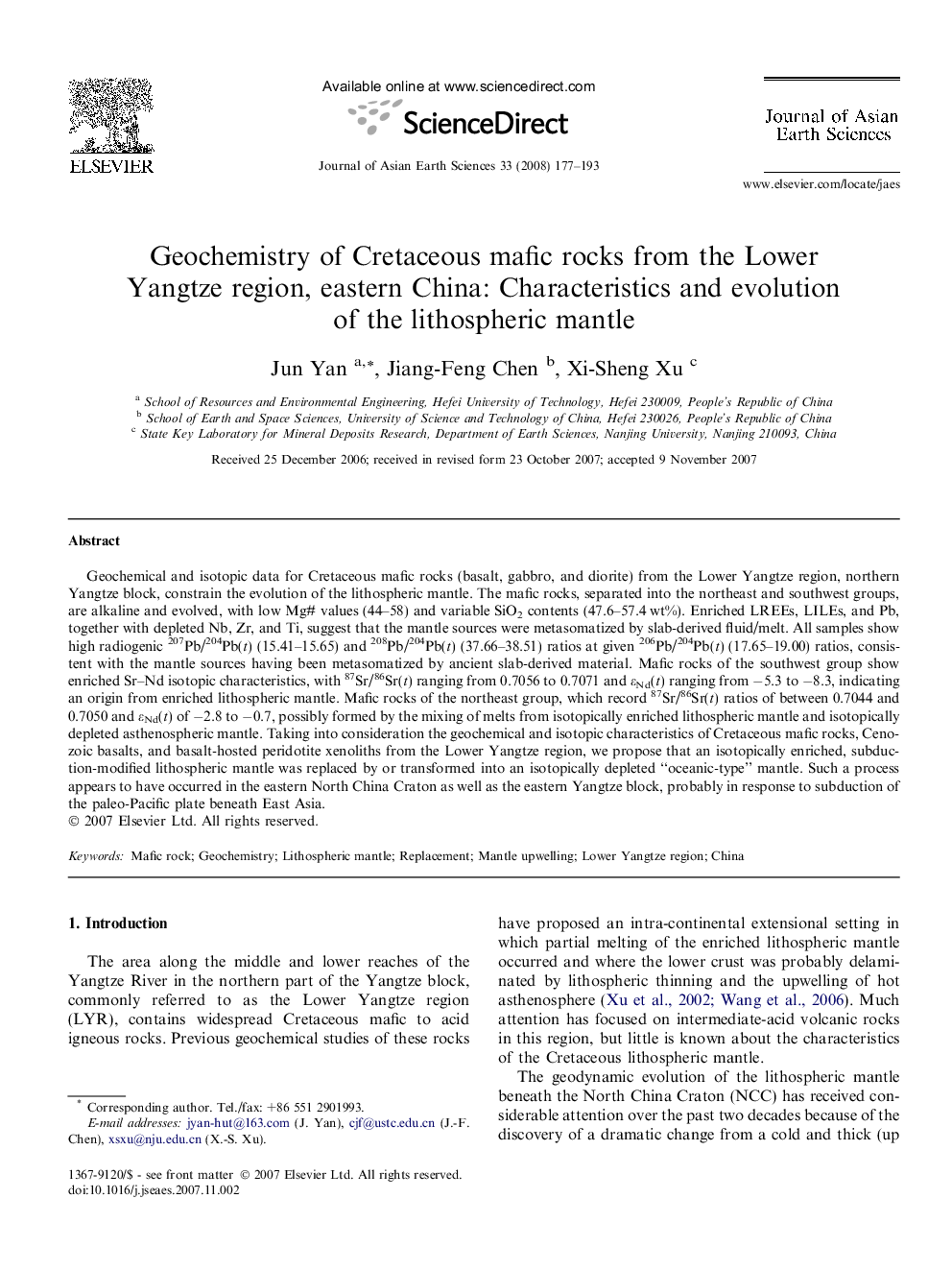| Article ID | Journal | Published Year | Pages | File Type |
|---|---|---|---|---|
| 4732624 | Journal of Asian Earth Sciences | 2008 | 17 Pages |
Geochemical and isotopic data for Cretaceous mafic rocks (basalt, gabbro, and diorite) from the Lower Yangtze region, northern Yangtze block, constrain the evolution of the lithospheric mantle. The mafic rocks, separated into the northeast and southwest groups, are alkaline and evolved, with low Mg# values (44–58) and variable SiO2 contents (47.6–57.4 wt%). Enriched LREEs, LILEs, and Pb, together with depleted Nb, Zr, and Ti, suggest that the mantle sources were metasomatized by slab-derived fluid/melt. All samples show high radiogenic 207Pb/204Pb(t) (15.41–15.65) and 208Pb/204Pb(t) (37.66–38.51) ratios at given 206Pb/204Pb(t) (17.65–19.00) ratios, consistent with the mantle sources having been metasomatized by ancient slab-derived material. Mafic rocks of the southwest group show enriched Sr–Nd isotopic characteristics, with 87Sr/86Sr(t) ranging from 0.7056 to 0.7071 and εNd(t) ranging from −5.3 to −8.3, indicating an origin from enriched lithospheric mantle. Mafic rocks of the northeast group, which record 87Sr/86Sr(t) ratios of between 0.7044 and 0.7050 and εNd(t) of −2.8 to −0.7, possibly formed by the mixing of melts from isotopically enriched lithospheric mantle and isotopically depleted asthenospheric mantle. Taking into consideration the geochemical and isotopic characteristics of Cretaceous mafic rocks, Cenozoic basalts, and basalt-hosted peridotite xenoliths from the Lower Yangtze region, we propose that an isotopically enriched, subduction-modified lithospheric mantle was replaced by or transformed into an isotopically depleted “oceanic-type” mantle. Such a process appears to have occurred in the eastern North China Craton as well as the eastern Yangtze block, probably in response to subduction of the paleo-Pacific plate beneath East Asia.
